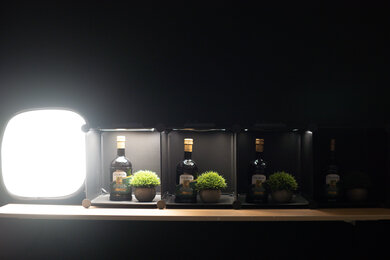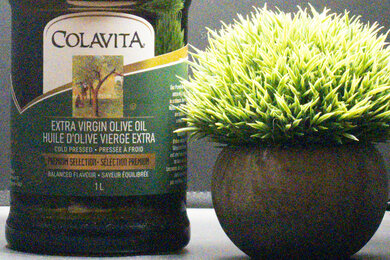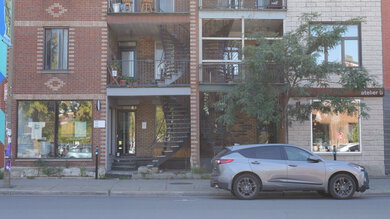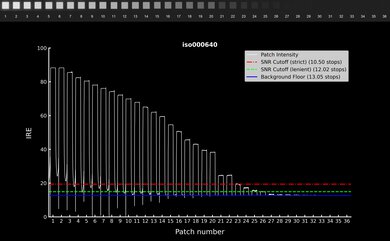The Panasonic LUMIX S5 II is a full-frame hybrid camera and the follow-up to the Panasonic LUMIX S5. With a new hybrid phase-detection autofocus system, faster burst shooting, and advanced video capabilities, it's a notable upgrade to an already great camera. The more video-centric Panasonic LUMIX S5 IIX takes those video features even further for pro-level videographers, with RAW video output and internal ProRes support, but features like 6k open gate recording and heat vents to prolong recording times still make the S5 II a hybrid beast.
Our Verdict
The Panasonic LUMIX S5 II is great for travel photography if you don't mind a bulkier kit. It isn't the most portable option, with a chunky build and heavy weight, but its full-frame sensor captures stunning images. In-body image stabilization makes it easier to shoot at slower shutter speeds without a tripod, and the camera has a pretty good battery life. Its screen also gets very bright, so glare won't be an issue on sunny days. That said, its autofocus tracking isn't the most reliable for photography.
- Sturdy, weather-sealed construction.
- Good battery life.
- In-body image stabilization.
- Somewhat heavy and bulky design.
- Autofocus tracking isn't too reliable in photography.
The Panasonic S5 II is excellent for landscape photography. Its full-frame sensor is well-suited for landscapes, with plenty of dynamic range and good noise handling for low light situations. In-body image stabilization comes in handy when shooting handheld at slower shutter speeds. The camera is also well-built and weather-sealed for some added peace of mind in adverse conditions. That said, it's a pretty heavy camera, so it might not be your first choice for long days on the go.
- Sturdy, weather-sealed construction.
- In-body image stabilization.
- Excellent image quality.
- Somewhat heavy and bulky design.
The Panasonic LUMIX S5 II is good for sports and wildlife photography. It doesn't have the fastest mechanical burst rate, but it's fast enough for most action scenarios. It can also shoot at up to 30 fps with its electronic shutter, but that comes with the possibility of rolling shutter distortion with very quick subjects or camera pans. The camera's autofocus tracking also isn't the most reliable.
- Sturdy, weather-sealed construction.
- Excellent image quality.
- Fairly quick burst rate.
- Somewhat heavy and bulky design.
- Autofocus tracking isn't too reliable in photography.
The Panasonic LUMIX S5II is good for vlogging if you do a lot of in-studio or sit-down recording. It's quite bulky and heavy, so it isn't well-suited to on-the-go vlogging. Still, it's a very capable video camera, with up to 6k recording and a wide range of frame rate options, including 4k at 60 fps with a crop and 1080p at up to 120 fps. Battery life is great, and the camera doesn't overheat. The fully articulated screen makes it easy to monitor yourself while recording, too.
- Sturdy, weather-sealed construction.
- Heat vents to reduce risk of overheating.
- In-body image stabilization.
- Significant rolling shutter effect.
- Somewhat heavy and bulky design.
The Panasonic S5 II is a fantastic studio video camera. It can record open gate 6k video, giving you more flexibility to crop into different aspect ratios. Plus, it can capture 10-bit 4:2:2 video internally, with excellent dynamic range in its Log recording mode. There are also no recording time limits in 4k. It records 4k at 60 fps, albeit with an APS-C crop, and includes a dedicated Slow & Quick mode for slow-motion recording. Plus, it includes both a headphone and mic jack, as well as a full-size HDMI port. That said, you have to pay for an additional 'Upgrade Key' if you want to output RAW video. Unfortunately, it also has heavy rolling shutter distortion with quick panning movements.
- Sturdy, weather-sealed construction.
- Heat vents to reduce risk of overheating.
- 6k open gate recording.
- 4k at up 60 fps.
- Internal 10-bit 4:2:2.
- Heavy crop when recording in 4k / 60 fps.
- Significant rolling shutter effect.
- Somewhat heavy and bulky design.
- RAW video output only available at additional cost.
The Panasonic S5II isn't designed for POV-style action video. It can be a good option to record action from the sidelines, with plenty of frame rate options and a dedicated Slow & Quick mode for slow-motion. That said, it isn't the most portable camera, and there's heavy rolling shutter effect with panning movements.
- Sturdy, weather-sealed construction.
- Significant rolling shutter effect.
- Not designed for action video mounts.
- Somewhat heavy and bulky design.
The Panasonic S5II has excellent RAW photo performance. Its sensor does a great job of managing noise in low light, and images appear sharp thanks to its high-resolution sensor. The camera also has fantastic dynamic range, so it can capture a very wide array of detail in high-contrast scenes.
- Fantastic dynamic range.
- Great noise handling.
Performance Usages
Changelog
-
Updated Dec 12, 2024:
We wrote text for the new tests added in Test Bench 0.13 and updated the Verdict section accordingly.
- Updated Dec 12, 2024: We've converted this review to Test Bench 0.13. We've added new tests for Video Dynamic Range and Luminosity Patch Detection. You can learn more about these updates in the changelog.
- Updated Oct 02, 2024: We added comparisons to the Panasonic LUMIX S9 in the Portability and Sensor boxes. We also added a comparison to the Panasonic LUMIX GH7 in the Video Features section.
- Updated Feb 12, 2024: Added mention of the Panasonic LUMIX GH6 in the Video File Format and Compression box.
Check Price
Differences Between Sizes And Variants
The Panasonic LUMIX S5 II comes in one color variant, black. You can see our unit's label here. You can buy the camera body on its own or bundled with a kit lens like the LUMIX S 20-60mm f/3.5-5.6 zoom lens or other lenses, depending on the retailer.
The Panasonic LUMIX S5 IIX is the sister model of the standard S5 II, and it comes with enhanced video features. These include RAW video output out of the box, the ability to record video to an SSD via USB, and more recording format options, with internal ProRes support and All-Intra compression. With the optional Software Upgrade Key DWW-SFU2, which comes at an additional cost, the S5 II gains RAW video output but not any of the other features available on the S5 IIX.
If you come across any other variants, let us know, and we'll update the review.
Popular Camera Comparisons
The Panasonic LUMIX S5II is an excellent full-frame hybrid camera. As the first LUMIX camera to feature phase-detection autofocus, it improves one of the Panasonic LUMIX S5's biggest downsides among its peers, although the implementation of the AF system is still far from perfect and it still falls behind the competition in speed and accuracy when taking photos. That aside, if you're more video-inclined, the S5 II delivers in a lot of ways, with 6k open gate recording, 4k recording at 60 fps (with an APS-C crop), an excellent IBIS system, and fantastic heat management. However, if you need more advanced features like RAW video output over HDMI, you're probably better off going with the Panasonic LUMIX S5 IIX.
For more options, check out our picks for the best cameras for videography and filmmaking, the best full-frame mirrorless cameras, or the best cameras we've tested overall.
The Panasonic LUMIX S5 II offers some improvements over the Panasonic LUMIX S5, including a new processing engine and a slightly redesigned body, with heat vents to reduce overheating and enable longer video recording. It also has a new phase-detection autofocus system, and it definitely helps in video, reducing the distracting background pulse that happened with the older contrast-based system. However, it still struggles to keep up when shooting photos continuously. The S5 II expands on some of the S5's video capabilities, with 6k open gate recording and no recording time limits, but it also lacks RAW video output out of the box, unlike the original S5.
The Sony α7 IV and the Panasonic LUMIX S5 II are both excellent hybrid cameras, each with their own advantages. The Sony has a much more reliable autofocus system, particularly for taking photos. It also has a better overall battery life and a more established lens ecosystem. On the flip side, the Panasonic has more advanced video features, with 6k recording, vectorscope functionality, and the option to add RAW video output with a paid software upgrade.
The Panasonic LUMIX S5 IIX is the video-oriented twin to the Panasonic LUMIX S5 II. They share a lot in common, including identical bodies (though the S5 IIX is distinguished by an all-black finish), ergonomics, and build quality, as well as the same full-frame sensor, so you'll get identical image quality out of them. Beyond that, the S5 IIX has a few added features for advanced video shooters, like external SSD support, RAW video output, and low compression All-I codecs.
The Panasonic LUMIX S5 II and the Panasonic LUMIX S9 are both part of Panasonic's full-frame lineup. They share a lot internally, including the same 24 MP full-frame sensor, IBIS, and autofocus system, but that's largely where the similarities end. The S5 II sits at a higher price point and is aimed at more advanced photographers, videographers, and hybrid shooters, with a more robust build quality, better ergonomics, and more physical controls, as well as a viewfinder, dual SD card slots, a mechanical shutter, and a hot shoe. The S9 has a more compact, simplified design that's meant to appeal to content creators, but it's a less versatile camera in nearly every way.
Test Results

The Panasonic S5 II is a bit bigger than its predecessor, with a more pronounced viewfinder bump at the top and slightly chunkier dimensions, which you can see from the top and the front. They're similar in weight, and though the S5 II isn't the lightest camera, it feels well-balanced with full-frame lenses. If you're looking for a more portable full-frame camera, the Panasonic LUMIX S9 uses the same sensor as the S5 II in a more compact body, but it comes with several physical compromises, including lacking a viewfinder and handgrip.
The camera feels very well-built. It has a weather-sealed body made of plastic and magnesium alloy. The dials and buttons feel solid, and the inputs are covered with tight-fitting, gasketed rubber flaps. The SD card compartment and battery compartment both feature hinged locking doors that feel secure as well. Unlike its predecessor, it has fixed shoulder strap attachment points, which is a nice touch that prevents them from rattling around and creating noise in videos.
As mentioned, the body has been slightly redesigned compared to the Panasonic LUMIX S5. One of the biggest differences is the addition of heat vents around the viewfinder bump. These are meant to dissipate heat and provide better heat management when recording in demanding video modes.
The camera's ergonomics are excellent. With extensive physical controls and well-spaced buttons, it's very easy to adjust settings as needed, without accidentally changing an input. The dedicated ISO and exposure compensation buttons near the shutter are also nice to have and really give you full control over the most important settings without having to dive into the menus. The grip is also large and feels secure, with a rubbery finish that isn't slippery. Overall, the handling and ergonomic design of this camera feel very well thought-out.
The camera's electronic viewfinder is an improvement over the Panasonic LUMIX S5, with a higher resolution for a crisper image. The eyecup is a bit harder than the one on the S5, but it's still comfortable to use.
The screen is fully articulated, with a high resolution and full touch capability, so you can easily navigate settings, select focus points, or take pictures with a tap of the screen. It gets more than bright enough to overcome glare from the sun.
The user interface on the Panasonic S5 II is fantastic. Settings are clearly organized and labeled, making it easy to find what you're looking for. You can also create a custom menu for all of your most-used settings, and there are plenty of customization options, including for the quick menu. There are also some nice quality-of-life touches that make it easier to navigate. For example, when in selecting from the many resolution and frame rate options, you can filter the settings by resolution, frame rate, or codec to more easily find the settings you need. The menu also has a 'Night Mode' to reduce eyestrain and ambient light from the display when shooting at night or in dark settings. You can see the Night Mode menu here and the display here.
Like its predecessor, the Panasonic LUMIX S5 II uses a 24.2-megapixel full-frame sensor, but the Mark II features an upgraded processor that Panasonic developed with Leica as part of their L² Technology agreement. They haven't specified what the processing engine is actually called, but it's featured in both the S5 II and S5 IIX. The sensor, also found in the Panasonic LUMIX S9, has a dual gain ISO design, and you can set which ISO range to use, between 'LOW,' which covers ISO 100-800, and 'HIGH,' which covers ISO 640-51200, natively. The low end can also be extended down to ISO 50, while the high end extends to a max of ISO 204800. If you're looking for a camera with a similar design and features but with a Micro Four Thirds sensor, check out the Panasonic LUMIX G9 II.
With firmware Ver.2.0, the S5 II receives some notable upgrades, including RAW data output via HDMI (with the purchase of the Software Upgrade Key DWW-SFU2) and the 'Live View Composite' feature, which comes pre-installed on the S5 IIX. Live View Composite is a useful feature for long-exposure photography or light painting that layers a series of long exposures to form a composite image that you have more control over. You can monitor the image in-camera as you go, for instance, and it doesn't add light to parts of the image that are already exposed, only adding new lights or subjects as they appear, which is useful for capturing things like light trails.
The Panasonic LUMIX S5 II has a great battery life overall. It uses the same battery as the Panasonic LUMIX S5, but the more demanding processing power clearly has an impact here, since the S5 II is only CIPA-rated for 370 shots, to the S5's 440 shots. Having said that, CIPA ratings are just ballpark figures, and your real-world usage will vary greatly depending on how you use your camera. Relative to other full-frame cameras in its class, it's not the worst, but it also falls far below cameras like the Sony α7 IV or the Canon EOS R6 Mark II. Thankfully, there's also a 'Power Save LVF Mode', which, according to Panasonic, can boost the number of shots from 370 all the way to over 1200 shots, depending on your lens.
In video, on the other hand, the camera lasts a very long time. You'll get almost two hours of continuous recording time in 4k, which is great. If you need to extend the battery life, you can also power the camera externally via USB-C with a sufficiently high-wattage power source. It'll even continue to charge the battery when the camera's turned on while using USB-C power delivery, albeit at a slower rate.
The burst shooting on the Panasonic S5 II is a notable step up from the original Panasonic LUMIX S5, with a faster mechanical burst rate and electronic burst shooting at up to 30 fps. The rolling shutter on the S5 II isn't great, however, so using the electronic shutter has the risk of distorting vertical lines in the background or even with fast-moving subjects. The S5 II's greater processing power is on display here, though, with a much deeper photo buffer. The original S5 filled up very quickly when shooting in RAW, but you'll be able to shoot about 250 RAW frames at 9 fps with the S5 II before the camera starts to slow down. It does, however, take a very long time for the buffer to clear, if you do manage to fill it up. With JPEGs, on the other hand, the buffer is virtually limitless.
The camera's autofocus tracking is disappointing overall. This is the first LUMIX camera to feature phase-detection autofocus, as opposed to the slower contrast-based AF on the Panasonic LUMIX S5. It's advertised to have 779 AF points. However, in practice, while the camera's auto subject detection works very well and accurately picks up various subjects, it struggles to actually keep up with moving subjects when shooting continuously. With quicker or more erratic subjects, it's always playing catch up.
If you don't rely on tracking and instead stick to a single center point to follow along with a subject, you can get great results, though it still has some trouble keeping up all the time. The AF sometimes gets stuck and only catches up a moment or two later. We tested AF with the LUMIX S 20-60mm f/3.5-5.6 lens.
The Panasonic LUMIX S5 II has a five-axis in-body image stabilization system that Panasonic advertises to offer up to 5 stops of compensation. However, the Mark II also features what Panasonic calls 'Active I.S.', which is supposed to boost the camera's stabilization performance even further. We did notice an improvement over the Panasonic LUMIX S5 in that respect when taking photos handheld, with clear shots at very slow shutter speeds. We tested image stabilization using the LUMIX S 20-60mm f/3.5-5.6 lens, which doesn't have optical image stabilization. Note also that stabilization performance can vary drastically depending on your lens, focal length, and even the steadiness of your hands.
The Panasonic LUMIX S5 II has fantastic dynamic range. The usable range is remarkably wide, allowing you to capture high-contrast scenes without losing too much detail.
The Panasonic LUMIX S5 II can capture very fine details. You can easily make relatively large prints, and photos have a fair amount of cropping leeway, especially if you're sharing your images online.
New to the Mark II is the 'High Resolution' mode, which shifts the sensor incrementally to capture eight consecutive frames that are then compiled into a 96-megapixel composite image. This mode should ideally be used with a tripod. You can see a sample high-res image here. The camera also captures a standard-resolution image alongside it, which you can see for comparison here.
The camera's noise handling is great. It's a tad better than its predecessor in low light, though both cameras are very good at managing noise levels overall.
The Panasonic S5 II has a plethora of video features, though some of them aren't available until you update the firmware. With firmware ver. 2.0, the camera is capable of outputting 12-bit RAW video to a compatible Atomos or Blackmagic recorder. However, unlike the Panasonic LUMIX S5 IIX, these features aren't available right out of the box; you'll also need to purchase Panasonic's Upgrade Software Key DMW-SFU2 in order to get 12-bit RAW output in Apple ProRes RAW or Blackmagic RAW. Without the Upgrade Key, the camera is limited to 10-bit 4:2:2 output. If you need RAW video output, there's the S5 IIX, of course, but also the Panasonic LUMIX GH7, which not only outputs RAW video but can also record RAW video internally to CFexpress.
Even so, the camera's a notable step up from the original Panasonic LUMIX S5, with one of the biggest upgrades being full sensor 6k open gate recording in a 3:2 aspect ratio, which gives you more flexibility to crop your footage into different aspect ratios in post. The camera also supports full-width 6k and 4k (both UHD and DCI, called 'C4K'), downsampled from 6k. Open gate 3:2 and full-width 6k and 4k recording are all available at up to 30p, with the option to record at up to 60p in 4k with an APS-C crop.
Log recording is available with V-Log, which Panasonic advertises to have over 14 stops of exposure latitude. The 'View Assist' feature is available for both V-Log and HLG formats and allows you to simulate what the footage will look like after processing. For V-Log, that includes a built-in Rec709 option, as well as up to ten custom LUTs, in either .cube or Panasonic's proprietary .VLT format, that you can import. You can also actually apply these LUTs in-camera through the 'Photo Style' setting. That can help speed up post-production, but it does mean you have to be sure to nail the exposure in-camera.
Panasonic is also one of the few brands to offer a vectorscope tool along with waveforms and histograms. The vectorscope is a video industry standard used to monitor the color and tone of your footage while recording, and it's a nice touch that not many consumer cameras offer.
If you want to use an XLR microphone for pro-level audio capture, you can buy the optional DMW-XLR1 adapter. With the XLR adapter, the S5 Mark II supports 4-channel audio capture.
Note that 6k recording is only available in MOV format, while 4k can be recorded in either MOV or MP4. Unlike the Panasonic LUMIX S5 IIX or the Panasonic LUMIX GH6, the S5 II doesn't support All-Intra recording or internal ProRes (422 and 422 HQ) codecs. That said, it still covers a wide range of formats that are suitable for less demanding video production purposes.
The Panasonic S5 II can record full-width 4k video at up to 30 fps, with an APS-C crop on 60 fps recording, just like the original Panasonic LUMIX S5. That isn't too surprising, as uncropped 4k / 60 fps recording still isn't widespread among full-frame cameras, though the Canon EOS R6 Mark II is the exception in that regard.
There's also a dedicated S&Q (Slow & Quick) mode, which lets you capture 4k or DCI 4k video at up to 60 fps and output the video at either 30 fps (2x slow) or 24 fps (2.5x slow).
The Panasonic LUMIX S5 II has fantastic 4k internal recording capabilities. It supports internal 10-bit 4:2:2 capture in MOV format. If you shoot in MP4, you'll be limited to 4:2:0 sampling, so you'll have a bit less flexibility in post. In 4k, there's no time limit on recording either, which is great. However, with the 'Thermal Management' setting set to 'Standard' when recording in 6k or 5.9k at 30 fps, the camera limits recording to 30 minutes.
The bitrates will vary depending on what format you record in. You can see some of the bitrates we captured below:
| Resolution | Format | Min Bitrate | Max Bitrate |
| 6k | MOV | 193 Mbps | 193 Mbps |
| 4k | MOV | 144 Mbps | 200 Mbps |
| 4k | MP4 | 70.4 Mbps | 106 Mbps |
Whereas we didn't see much improvement with the new phase-detection autofocus system in photo mode, it's a very different story in video mode. While the Panasonic LUMIX S5 was decent, its contrast-based DFD (Depth From Defocus) autofocus could sometimes be slow to keep up with moving subjects and could cause a distracting pulsing in the background of videos. The S5 Mark II, on the other hand, performs remarkably well. It pretty seamlessly stays with the intended target. There is a bit of stepping at times when tracking a moving subject, but all in all, it's quick and reliable.
We also tried out the AF in 6k, which you can see here. There's a bit more stepping with focus transitions than in 4k, but it's still very good overall.
The Panasonic S5II captures very high-quality video. 4k looks incredibly sharp and detailed, and the camera performs amazingly well in low light, too, with plenty of detail retention and minimal noise. You can compare how video looks using the camera's other resolution options below:
| Resolution | Test Scene Extract |
| 6k | Photo |
| 5.9k (17:9) | Photo |
| DCI 4k (17:9) | Photo |
| 3.3k (APS-C Anamorphic 4:3) | Photo |
| S&Q 4k (60 fps, slowed to 30 fps) | Photo |
| S&Q FHD (120 fps, slowed to 60 fps) | Photo |
Note: The lighting in the area in which we record low light video quality has changed, so the 'Low Light Capability' sample video is harder to compare directly with previous cameras we've tested.
Unfortunately, there's heavy rolling shutter distortion in 4k, and it's even a bit worse than its predecessor. Among its peers, it's not quite trailing the pack (that honor goes to the Sony α7 IV), but it doesn't perform as well as the Canon EOS R6 Mark II, the Nikon Z 6II, or Sony ZV-E1. That said, in APS-C mode, the camera does perform notably better, with a much less severe distortion angle, and the camera's video quality is great even with a crop, as you can see here.
The Panasonic S5 II can record Full HD video at up to 120 fps, which is great. In S&Q (Slow & Quick) mode, you can also capture slow-motion 1080p footage at up to 180 fps, with the option to slow it down to 60 fps (3x slow), 30 fps (6x slow), or 24 fps (7.5x slow).
In 1080p, you still get internal 10-bit 4:2:2 when shooting in MOV, with MP4 files limited to 8-bit 4:2:0. There's no recording time limit in 1080p. Bitrates will vary depending on your settings and recording format, but you'll get significantly higher bitrates using MOV (149 Mbps) as opposed to MP4 (28 Mbps).
The autofocus performs incredibly well in FHD, with even smoother focus transitions than in 4k. It does an amazing job of keeping up with moving subjects, even with quicker movements or when popping in and out of the frame.
The camera's 1080p capture is very high quality. The image looks sharp and detailed. The camera performs very well in low light, too, with relatively little noise.
Note: The lighting in the area in which we record low light video quality has changed, so the 'Low Light Capability' sample video is harder to compare directly with previous cameras we've tested.
Sadly, rolling shutter distortion isn't much better in FHD. There's still pretty heavy slanting with vertical lines when panning the camera to the side. That said, this is mostly noticeable with quick camera pans.
The camera's dynamic range is excellent. Taking noise into account, it captures a very wide usable dynamic range despite having a somewhat noisier background floor than its predecessor, the Panasonic LUMIX S5. The camera uses a dual native ISO sensor, so you'll have the cleanest dynamic range at ISO 640 and ISO 4000, which are the base ISOs for V-Log. giving you some more flexibility in low-light situations.
Tested settings:
- Resolution: 4k
- Frame Rate: 30 fps
- Log Format: V-Log
The Panasonic S5 II preserves a wide range of detail above middle gray, though it has less latitude in the shadows than the Panasonic LUMIX S5.
Tested settings:
- Resolution: 4k
- Frame Rate: 30 fps
- Log Format: V-Log
Like its predecessor, the Panasonic LUMIX S5 II has two SD card slots, but now they're both rated for faster UHS-II cards, which is great for those who prefer to keep a running backup or separate RAW and JPEG files. The SD card compartment is well-placed on the side of the camera, so you can easily switch out cards even when using a tripod.
The camera has a USB-C port for charging, power delivery, and file transfer. In a nice upgrade from the original Panasonic LUMIX S5, there's now a full-size HDMI port, which means you don't have to fuss around with an adapter when connecting an external recorder. Plus, both mic and headphone jacks, rounding out all the peripherals you might need for video work.






















